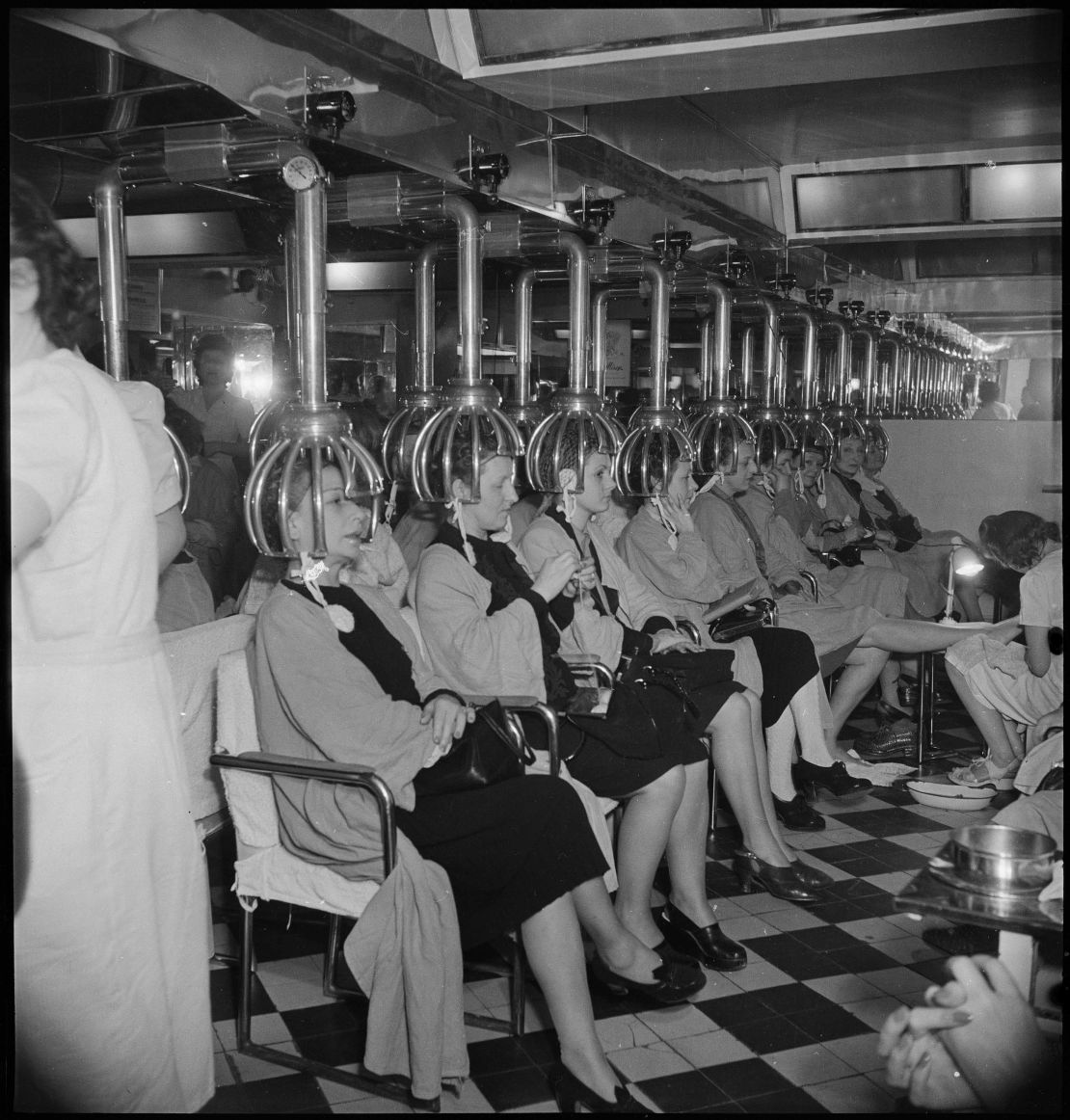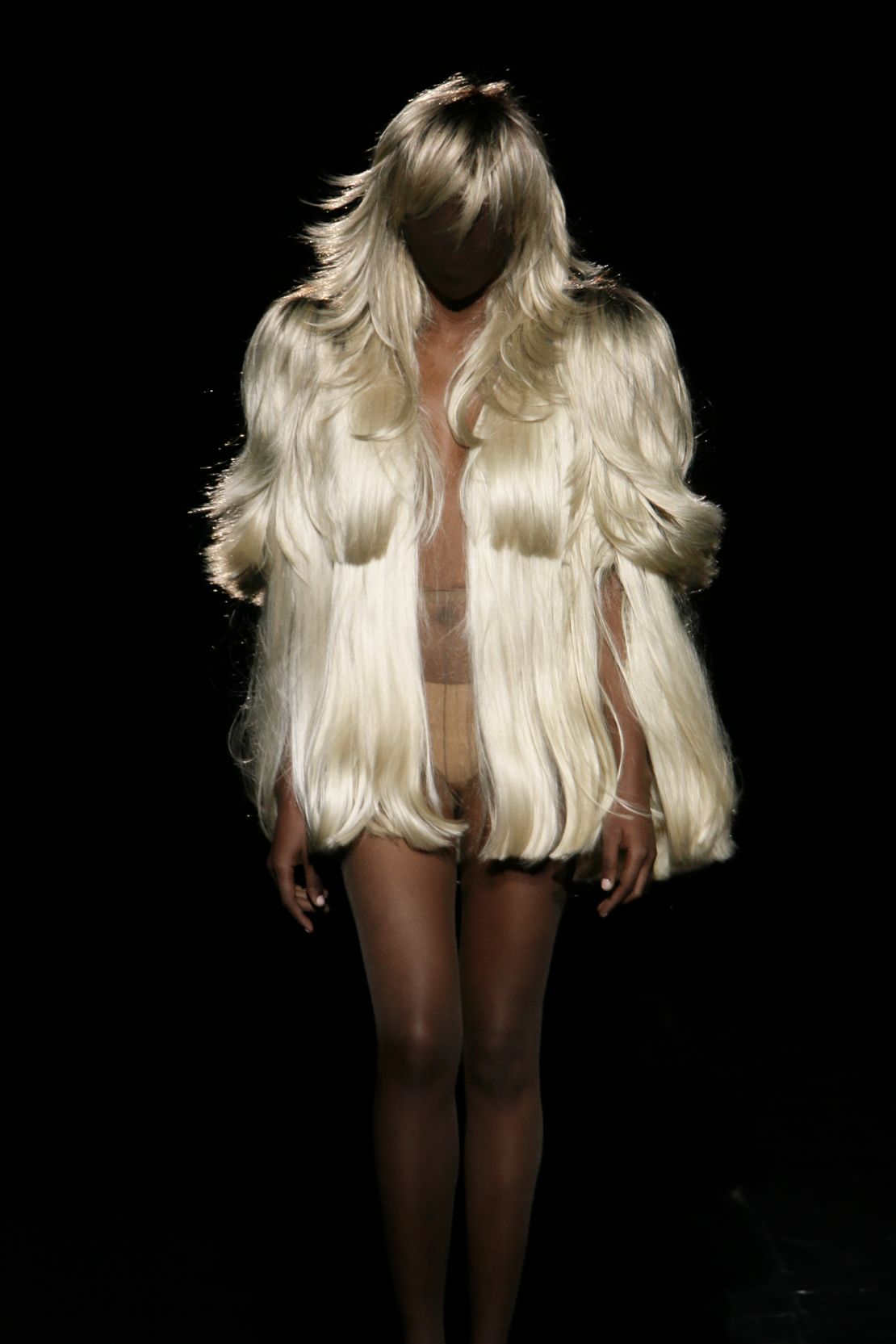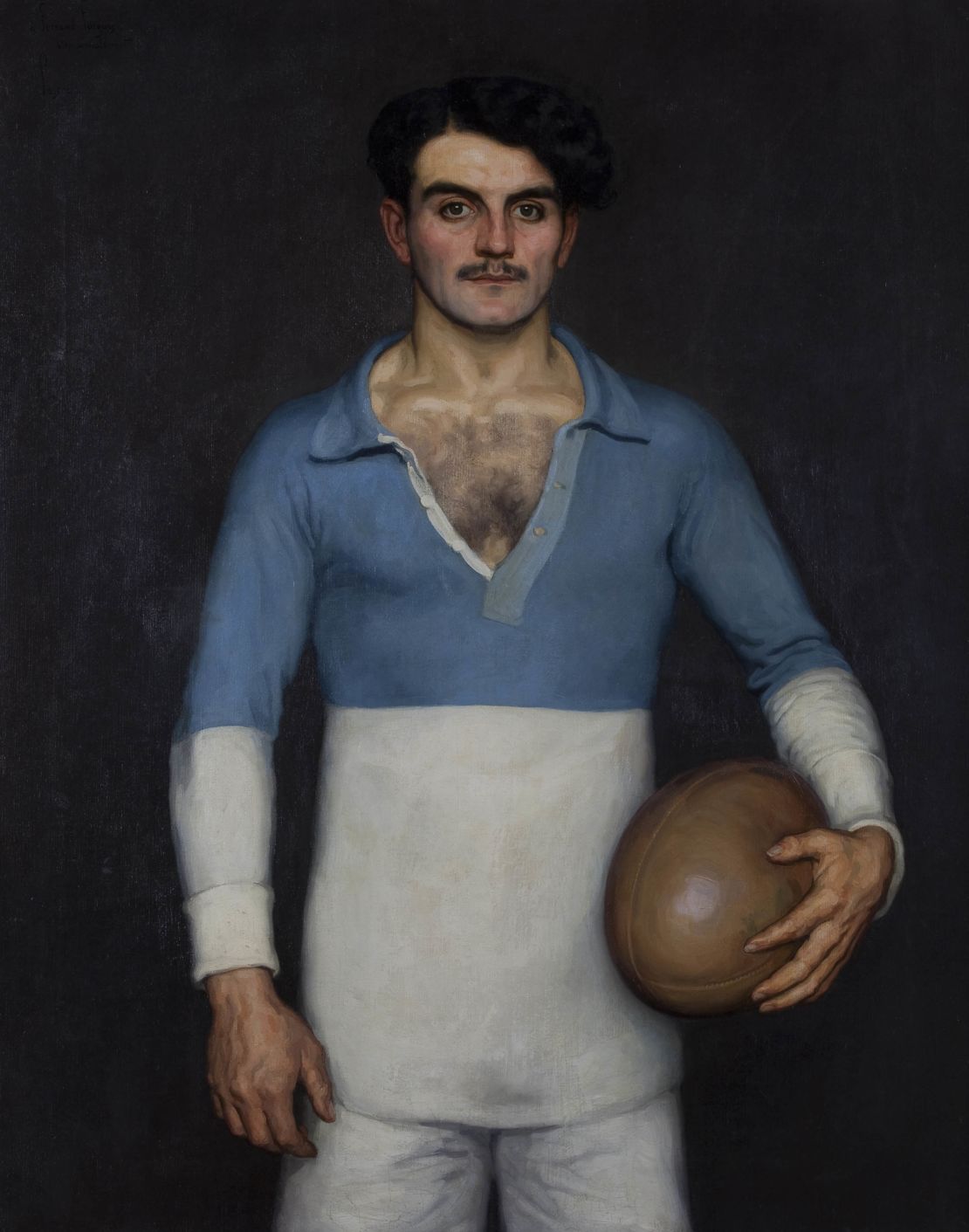I never thought I would hear Tom Selleck’s mustache discussed in the same breath as a royal wig made of pubic hair, but the Museum of Decorative Arts in Paris?is full of surprises.
Both are?part of the museum’s exhibition “Des Cheveux et des Poils,” which translates to “Hair and Body Hair” (or fur) — the museum’s latest attempt to explore the relationship between the human body and fashion (recent shows have interrogated?footwear, the rules of attire and undergarments).
Boasting 600 works dating from the 15th century to today, the show, in the museum’s words, “demonstrates how hairstyles and the grooming of human hair have contributed to the construction of appearances for centuries.”

A fair share of the unusual is on display, including a full body suit that resembles a blond Wookie and several wigs shaped like animals. While Selleck’s mustache remains attached to his upper lip, the display dedicated to his facial hair includes footage from “Magnum, P.I.” Elsewhere,?the aforementioned royal wig — worn by Britain’s Charles II and supposedly made of hair from his mistresses’ nether regions — is represented by an empty stand, with the original believed to have been destroyed.
Despite bordering on the bizarre, the exhibition uses these pieces to explain how hair has long been exploited by fashion and used to express identity. Hair, wherever it may be, has been a tool of both self-expression and oppression, of protest and societal progress.
A collection of the unusual
For Rachael Gibson, a journalist who runs the popular Instagram account The Hair Historian, the exhibition is a welcome opportunity to examine beauty trends in an academic way that is usually only reserved for fashion.

“There are fashion museums all over the world, and fashion history is studied at universities.?(But) quite often beauty gets left out of the conversation,” she told CNN. “There are so many weird and wonderful things that happened within hair and beauty on a global and historical scale that tell us so much about what was happening in the world (at the time).”
On the day I visited, a few dozen people had lined up ahead of the exhibition’s 11 a.m. opening. We entered a dimly lit room where portraits of women, ordered chronologically, adorned the walls. The progression showed the evolution of hair styles in medieval Europe, when most adhered to Christian norms requiring heads to be covered with a hood or veil.
Come the 16th and 17th centuries, women’s hair was increasingly on display and, in particular, French women’s once-hidden locks?grew ever taller — reaching new heights in the 1770s as?seen in Jean-Baptiste-Andre Gautier-Dagoty’s 1777 painting “Portrait of a Woman.” Though the eye is drawn to the subject’s hazel eyes and thick eyebrows, it’s impossible to ignore the towering hairstyle she is sporting: a “high roll,” built over a crinoline cushion. Requiring significant preparation, the high roll was considered a status symbol among the French elite and eventually made its way to England and the United States.

Long hair remained in vogue throughout the 18th century, but not in all circles, as evidenced by a macabre party theme that emerged in 1795, following a period of the French Revolution known as the Reign of Terror. Relatives of those executed by guillotine?attended so-called “bals des victimes” (victims balls), at which they, in the words of one witness at the time, “cut their hair short around the neck, just as the executioner cuts the hair of victims.”
Hair as a sign of the times
The cropped cut became a style sported by other daring women of the period. A painting of one of the era’s fashion icons Madame Fouler, completed by French painter Louis-Leopold Boilly in around 1810, shows the countess sporting a short hairdo that became known as the “Titus.” French research non-profit organization The Napoleon Foundation quotes a hairdresser at the time stating that the style’s purposeful disorder “gives an air of youth and replaces all ornaments, jewels and feathers.”
Trends in hair, like clothing, are of course cyclical. Short hair for women made a comeback again in the 1920s with the bob, first for practical reasons — women and nurses working in World War I found it easier — and later as a statement of independence and equality.
These cycles are evident in men’s hair, too. At the exhibition, I overheard a young woman looking at the subject of a 16th-century portrait by Flemish Renaissance painter Pieter Pourbus. “That looks like a hipster,” she said.

The subject of men’s body hair in art and media is also examined. Why, the exhibition asks, have so many of history’s most famous depictions of men — such as Michelangelo’s “David” — portrayed them without any body hair whatsoever? Even the 1821 painting of Samson and Delilah by French artist Joseph-Desire Court shows the biblical figure — famous for drawing strength from his luxuriant hair — without any on his body.
As someone whose friends often joke that I’m wearing a sweater at the beach, I was particularly interested in the answer.
According to a museum display, hairless male bodies in art were synonymous with the idealized body, while the hairy body was associated with “virility, or even triviality.” Traditionally, the exhibition also noted, men’s body hair was only displayed in athletic portrayals, erotic illustrations and medical engravings. And while students in 19th-century art schools ?were instructed to draw what was in front of them — complete with hair — they were told that “in paintings and sculptures destined for public exhibition, body hair, considered repulsive, must not appear,” according to the museum text.

“The ideal,” reads an exhibition note underneath a portrait of a nude male model, “has long been of a hairless body.”
While a blow to my self-esteem, the comment?encapsulates the main theme of the exhibition: Hair, anywhere, can be many things — social signifier, act of rebellion, function of convenience — but rarely has it ever been “just hair.”
